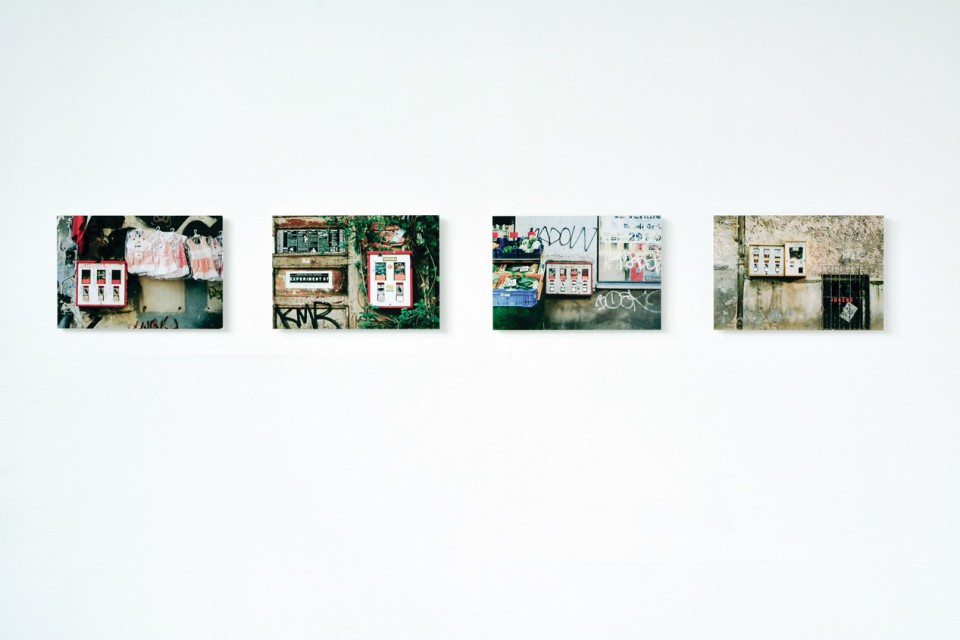Christine Kisorsy
born in New York (US) / Based in Berlin
geboren in New York (USA) / lebt und arbeitet in Berlin
Christine Kisorsy studied Documentation at the University of Applied Science in Hannover, Photography at Imago Fotokunst in Berlin and Curation at the University of Arts Berlin. She worked at the archive department of the Deutsche Kinemathek Museum for Film and Television in Berlin. Kisorsy’s work lies at the intersection of architecture, history and urban space. She focuses on documentary photography and the moving image. She’s interested in issues arising from the change and the disappearance of places, urban spaces and environments. Archive work and research is often part of the artistic concept.
Christine Kisorsy hat Dokumentation an der Fachhochschule Hannover, Fotografie bei Imago Fotokunst in Berlin und Kuration an der Universität der Künste Berlin studiert. Sie hat im Archiv der Deutschen Kinemathek – Museum für Film und Fernsehen in Berlin gearbeitet. Ihre Arbeit bewegt sich an den Schnittstellen von Architektur, Geschichte und urbanem Raum. Mit ihren Serien visualisiert sie die Auswirkungen gesellschaftlicher Transformationsprozesse und das Verschwinden von Orten und städtischen Räumen. Archive und wissenschaftliche Forschung sind oft Teil des künstlerisches Konzepts.
CHEWING GUM MACHINES – “GROSCHENGLÜCK”
Photography prints | 30 cm x 45 cm | 2001 – 2017
Kaugummiautomaten – „Groschenglück“
Fotografien | 30 cm x 45 cm | 2001 – 2017
The colorful painted metal boxes with view window, filled with chewing gum and toys, are part of the childhood-memory of many generations that grew up in the second half of the twentieth century; often the first “orientation system” for a child within the city, assigning the location of the machines with flavours. These machines are increasingly disappearing from our cityscape, their mechanism do no longer fit into our technically ambitious world. Long disappeared from the gentrified inner-city-areas, the remaining ones which survived on the weathered walls defy as an anachronism of their environment. Used for graffiti and stickers as an everyday communication forum, they have become “museum pieces of everyday culture”. An indicator of social environments and the status of their residents, anyone who wants to get to know a city and its neighbourhoods from a different perspective can go on a search for them.
Die mit Kaugummi und Spielzeug gefüllten, bunt lackierten Metallkästen mit Sichtfenster, sind ein Teil der Kindheitserinnerung vieler Generationen, die in der zweiten Hälfte des zwanzigsten Jahrhunderts aufgewachsen sind. Die Kaugummi-Automaten sind das erste „Orientierungssystem” in der Stadt, das man als Kind hatte, welches den Standorten der Automaten Geschmacksrichtungen zuordnete. Doch Kaugummiautomaten verschwinden zunehmend aus dem Stadtbild, denn die immer noch mechanisch funktionierenden Automaten passen nicht mehr in unsere technisch ambitionierte Welt. Aus den aufpolierten Vorzeigevierteln der Innenstädte sind sie schon längt verschwunden, doch an den verwitterten Häuserwänden mancher Kieze haben sie überlebt. Die verbliebenen Automaten trotzen anachronistisch ihrer Umwelt, mit der sie um so mehr verwachsen scheinen, je mehr sie in Vergessenheit geraten. Sie werden mit Graffiti und Aufklebern als alltägliches Kommunikationsforum genutzt, sind aber selber längst zu „Museumsstücken der Alltagskultur“ geworden. Wer eine Stadt und seine Bezirke von einer anderen Seite kennenlernen möchte, kann sich auf die Suche nach ihnen begeben und wird bald feststellen, das sie ein Indikator sind für die Lebenswelten und den sozialen Status seiner Bewohner.

